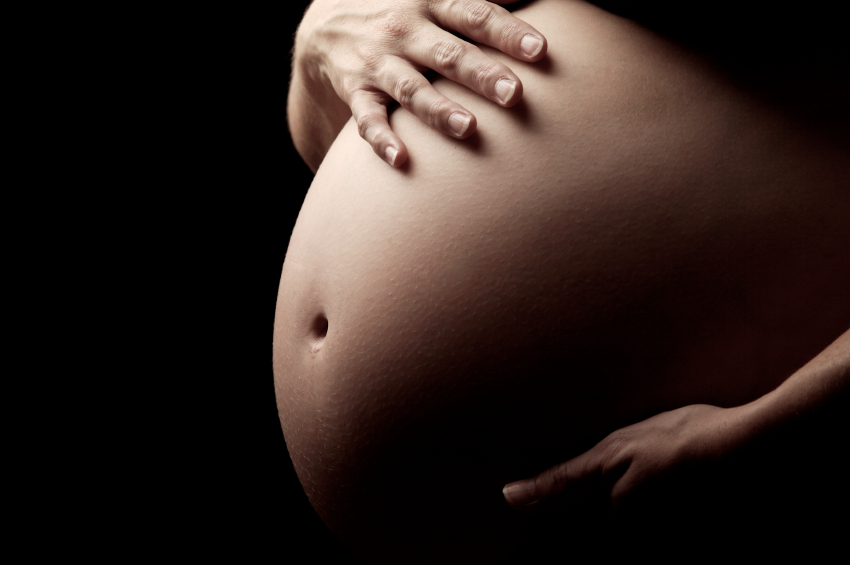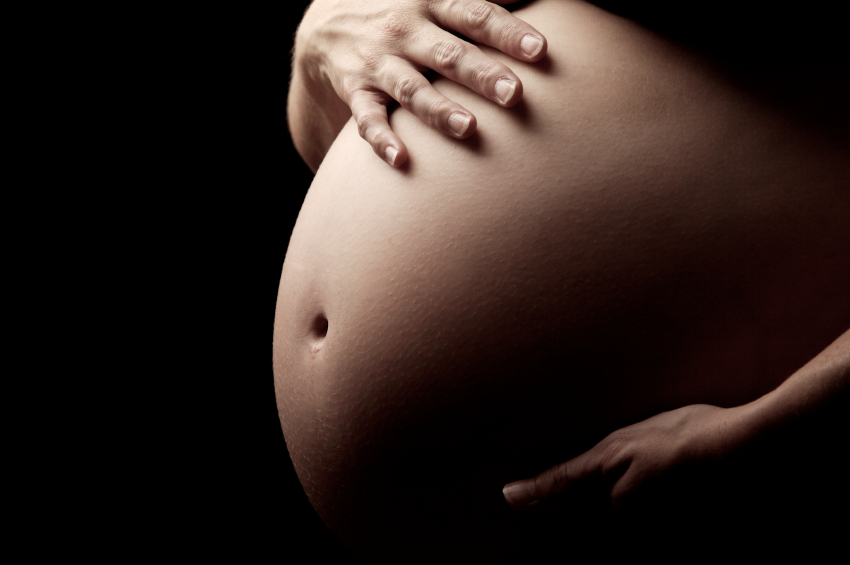New Study: Abortion after Prenatal Diagnosis of Down Syndrome Reduces Down Syndrome Community by Thirty Percent

How many babies prenatally diagnosed with Down syndrome (DS) are aborted in the United States each year? Well, we don’t know. While new data suggesting lower numbers has recently been published,[1] we continue to see most often in print a statistics of 90% – 92%. While that certainly draws attention to the horrifying reality that the majority of children prenatally diagnosed with DS are aborted, it is not accurate. That number relies on a 1999 European study with little data drawn from the U.S.[2] There are good reasons for advocates to use the best data available to raise awareness of the problem that exists in the link between prenatal diagnosis and abortion.
A new study conducted by Gert de Graaf, Frank Buckley, and Brian Skotko and recently published in the American Journal of Medical Genetics[3] applies rigorous statistical modeling to diverse data sets in an attempt to provide the most accurate number possible. It is important to know over time what impact relatively new noninvasive prenatal screening (NIPS) technologies, only available since October 2011, will have on the already high termination rate after a prenatal diagnosis of DS.
These new NIPS tests are able to identify cell-free DNA from the placenta in the mother’s blood as early as 10 weeks into her pregnancy, and claim to inform women – with near 99% sensitivity and specificity – if the baby she is carrying might have DS. Recent reports have indicated that some women are using these tests to make the decision to end their pregnancy without having the result confirmed with an invasive diagnostic test.[4] To understand the impact this new technology will have over time on birth rates of children with DS, it is essential to establish a benchmark that can be used for future comparison.
Unlike the U.S., some countries track birth defects in national registries along with prenatal diagnosis and termination rates, so there are little or no vagaries around this question. For example, the National Down Syndrome Cytogenetic Register (NDSCR) is a part of the larger British Isles Network of Congenital Anomaly Registers.[5] Both of these are part of EUROCAT, the broader European network of population-based registries that compiles epidemiological data on congenital anomalies across Europe. The NDSCR collects information on all diagnoses of trisomies 13, 18, and 21 in England and Wales. With a few clicks of a mouse, anyone can access the database and learn the prevalence, prenatal detection rates, and other key public health indicators related to genetic anomalies.
For example, using information gathered from all member registries, from 2008 to 2012, there were 4,288 live births of children with DS, 231 natural fetal deaths, and 5,215 terminations. DS live births as a percentage of total diagnosed pregnancies was 44%. Fifty-three percent of all pregnancies were aborted following prenatal diagnosis and a small percentage were lost to natural causes. We can also learn that during the same four-year period, 65.1% of the total DS cases were prenatally diagnosed.[6]
In the United States, we have no such data collection. And given how polarized we are as a nation around the topic of abortion and the strong value placed on the right to privacy, there is little chance that this level of data collection will ever be possible.
The authors of this study gathered data that is available and devised a sophisticated statistical model to estimate as closely as possible the impact of prenatal diagnosis on abortion rates. They then asked this question: How many children with DS have been born, and what has been the net effect of pregnancy terminations following prenatal testing on live birth prevalence during the period from 1900–2010? Given that prenatal diagnosis and legal abortion weren’t available before about 1974, the authors focused on the years from 1974 to 2010 to develop their estimates.
In brief, the answer to their question is that for the most recent years, 2006–2010:
- The estimated live birth prevalence for DS was approximately 12.6 per 10,000, or a total of around 5,300 births each year;
- The number of pregnancy terminations following prenatal diagnosis is estimated at 3,100;
- Taking natural losses into account, the authors estimate that there would have been 7,600 live births each year in the absence of prenatal diagnosis that resulted in abortion;
- Their estimate of live-birth prevalence for 2010 is around 1 in 792, or slightly fewer births than the 14.47 per 10,000, or 1 in 691, live-birth prevalence published by the Centers for Disease Control (2004–2006 estimates).[7]
The net result of their research is that abortion after prenatal diagnosis has reduced the population of individuals living with DS in the U.S. by approximately 30%. This should not be confused with the percentage of women who abort following a prenatal diagnosis. That number would certainly be higher. This reflects the overall reduction in the DS population, and takes into consideration total DS pregnancies, whether prenatally diagnosed or not. The authors state that prior to October 2011 and the availability of NIPS, about 72% of women elected to have traditional prenatal screens and only an estimated maximum of 2% went on to have invasive diagnostic procedures, i.e., amniocentesis or chorionic villus sampling. If prenatal screening becomes more widely available, as seems to be happening, then one would expect the number of terminations to increase.
As an interesting aside, the authors estimate the total case prevalence of DS in the U.S., excluding elective termination and natural loss, to be 1 in 365. This number correlates closely with the reported live birth incidence of DS in the Arab world where abortion for DS is not permitted. The birth prevalence in Dubai is estimated at 1 in 449 overall, but much greater among the Emiratis: 1 in 319.[8]
In this publication, the authors have identified regional and racial/ethnic differences in the prevalence of abortion following prenatal diagnosis by drawing data from 12 states that maintain live birth data of DS births by racial/ethnic group. The group with the highest number of terminations was Asians/Pacific Islanders (61%) followed by non-Hispanic whites (39%), non-Hispanic blacks/Africans (27%), Hispanics (18%), and American Indians (16%). Regionally, Hawaii and the Northeast states have the highest termination rates compared to other regions of the US at 62% and 46%, respectively. The South is the lowest with an overall reduction rate of approximately 23%.
The authors of this study have provided valuable baseline data that should help frame the discussion of the impact of prenatal diagnosis on future termination rates.
The fact that there have been no clear-cut statistics in the U.S. regarding how many women receive a prenatal diagnosis for DS, their subsequent decision regarding birth, termination, or adoption is frustrating. It is equally frustrating that there is no accurate census of the population living with DS in the U.S. Another statistically based study published in 2013 revised the estimated population of those living with DS in the U.S. in 2008 from a previously estimated number of 400,000 to around 250,000 – that represents a 25%–40% reduction in population that could substantially impact services and supports, and also potential funding made available for research.
Using the statistic of 90% or 92% when citing abortions of babies with DS indeed presents a horrifying scenario, but in truth so do the numbers derived from more recent and presumably accurate surveys. DS advocates should consider the impact using old and inaccurate data might have on those considering their options following a prenatal diagnosis of DS. Hearing that 90% to 92% of parents opt for termination might have the opposite effect from what advocates desire and even encourage those who would consider abortion after a prenatal diagnosis.
Advocates would be far better served by using the statistics provided in this new study, i.e., that it is estimated that abortion following a prenatal diagnosis of DS results in a 30% reduction in overall DS births. Jamie Natoli, et al., proposed another statistic that correlates well with this study. In a 2012 publication in Prenatal Diagnosis, their research calculated a weighted mean across the U.S. of a 67% termination rate following prenatal diagnosis.[9]
Whatever the statistical realities may be, the number of those who choose abortion after a prenatal diagnosis is far too high. It should be none. To paraphrase the recently deceased disabilities rights activist, Dr. Adrienne Asch, the only thing prenatal diagnosis can provide is a first impression of who a child will be. Making such a radical decision as to end the life of a child based upon a first impression is a most horrible and violent form of discrimination. It has no place in an American society that is committed to ending discrimination in any form and that has intensified that effort for persons with disabilities over the last 25 years since the signing of the Americans with Disabilities Act in July 1990.
Mark Bradford is president of the Jérôme Lejeune Foundation USA.
[1] Jaime L Natoli, et al. (2012), Prenatal Diagnosis of Down Syndrome: A Systematic Review of Termination Rates (1995–2011). Prenat. Diagn., 32: 142–153. doi: 10.1002/pd.2910
[2] Caroline Mansfield, Suellen Hopfer and Theresa M. Marteau on behalf of European Concerted Action. (1999), Termination Rates after Prenatal Diagnosis of Down Syndrome, Spina Bifida, Anencephaly, and Turner and Klinefelter Syndromes: A Systematic Literature Review. Prenat. Diagn., 19: 808–812. doi: 10.1002/(SICI)1097-0223(199909)19:9<808::AID-PD637>3.0.CO;2-B
[3] Gert de Graaf, Frank F. Buckley, Brian G. Skotko. (2015), Estimates of the live births, natural losses, and elective terminations with down syndrome in the United States.
Am J Med Genet Part A 167A:756–767.
[4] Beth Daley, “Oversold and misunderstood: Prenatal screening tests prompt abortions.” New England Center for Investigative Reporting. Accessed online at http://features.necir.org/prenatal-testing
[5] See http://www.binocar.org/data
[6] See http://www.eurocat-network.eu/prenatalscreeninganddiagnosis/prenataldetection(pd)rates
[7] See http://www.cdc.gov/ncbddd/birthdefects/features/birthdefects-keyfindings.html
[8] See http://www.researchgate.net/publication/6641058_Incidence_of_Down_syndrome_in_ Dubai_UAE
[9] Op cit.























